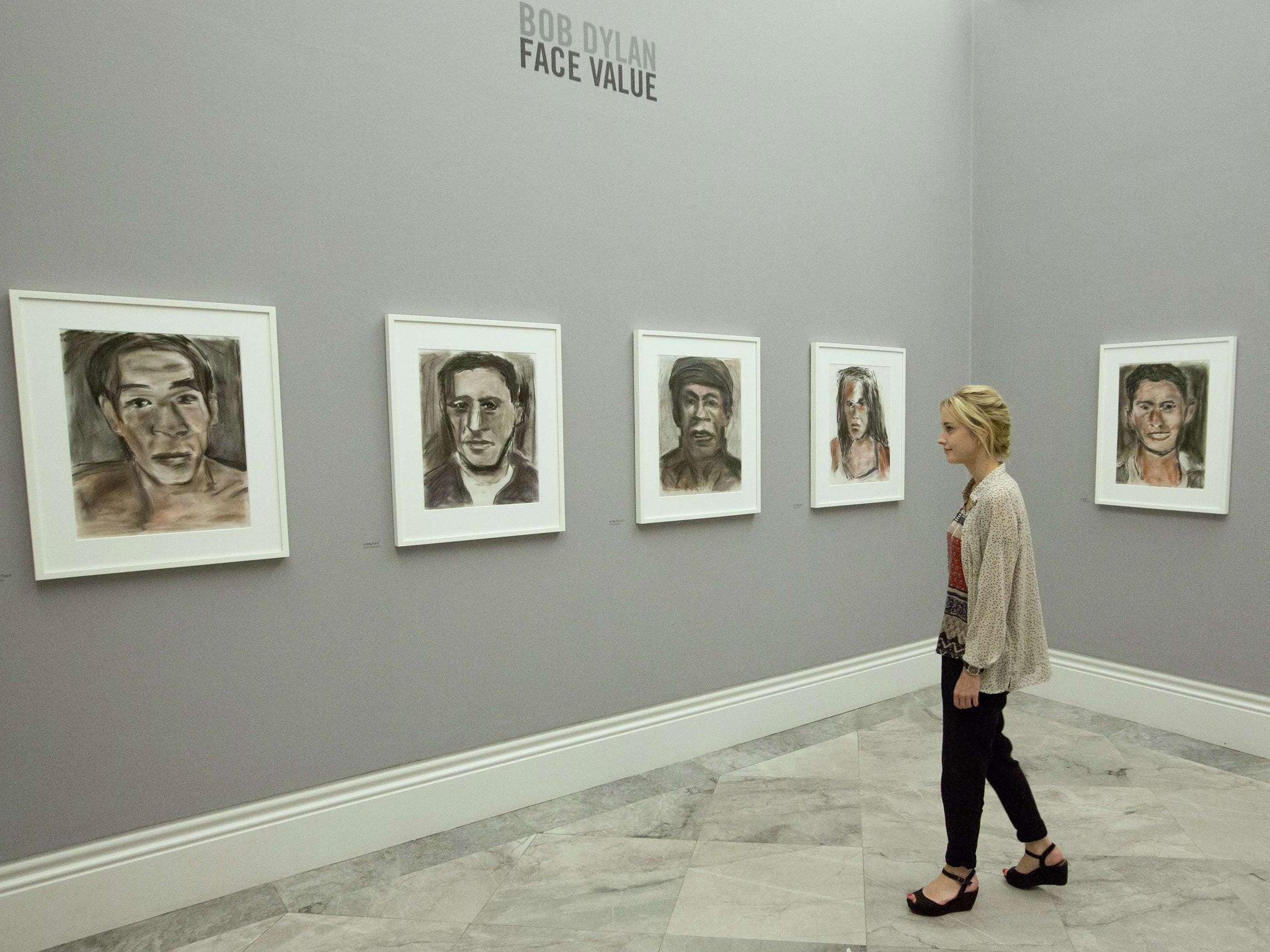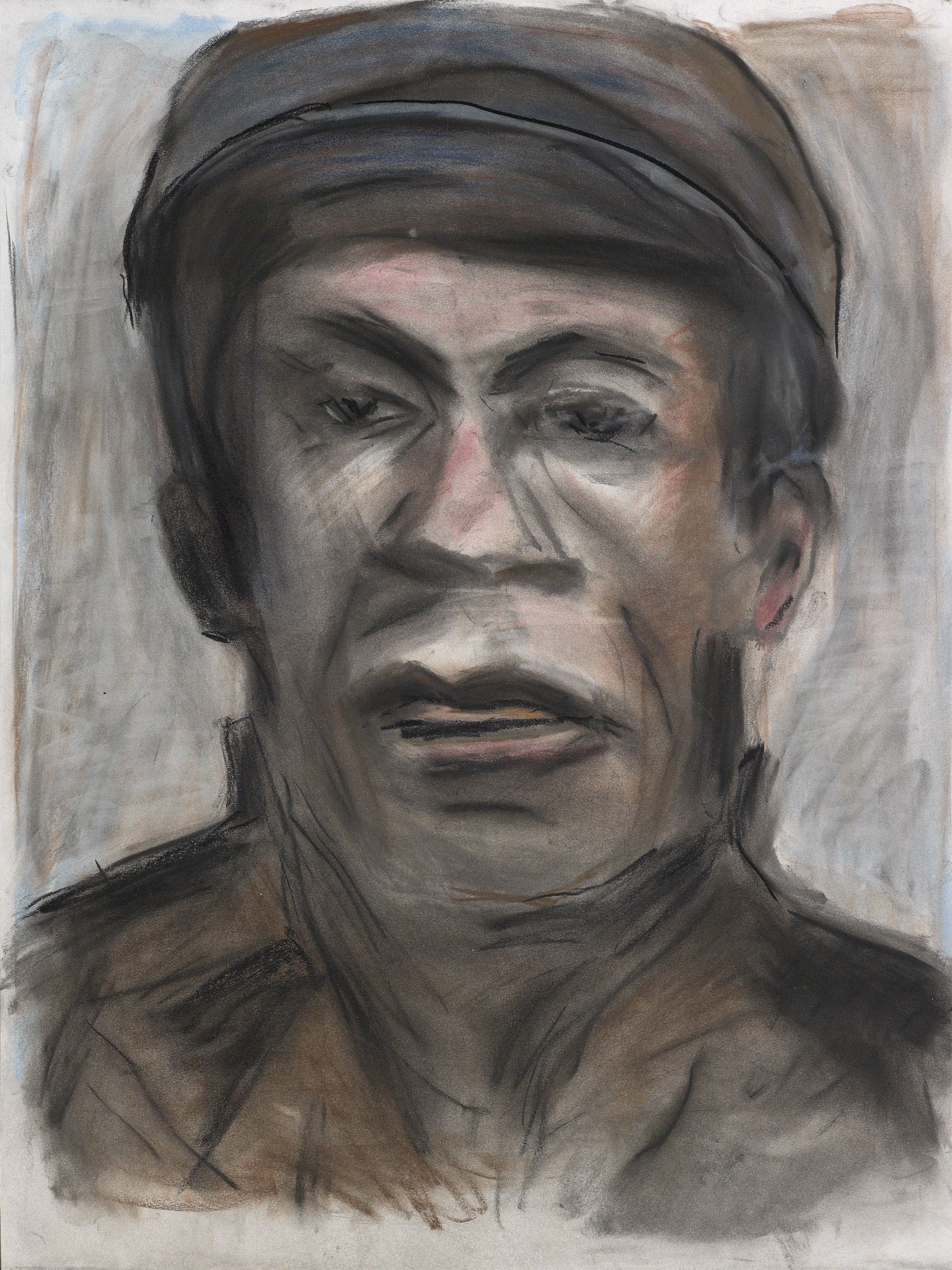Review: Bob Dylan, Face Value - The musician-turned-artist's portraits have a lyrical side
Your support helps us to tell the story
From reproductive rights to climate change to Big Tech, The Independent is on the ground when the story is developing. Whether it's investigating the financials of Elon Musk's pro-Trump PAC or producing our latest documentary, 'The A Word', which shines a light on the American women fighting for reproductive rights, we know how important it is to parse out the facts from the messaging.
At such a critical moment in US history, we need reporters on the ground. Your donation allows us to keep sending journalists to speak to both sides of the story.
The Independent is trusted by Americans across the entire political spectrum. And unlike many other quality news outlets, we choose not to lock Americans out of our reporting and analysis with paywalls. We believe quality journalism should be available to everyone, paid for by those who can afford it.
Your support makes all the difference.“The empty handed painter from your streets / Is drawing crazy patterns on your sheets,” Bob Dylan sang on his 1965 hit "It’s All Over Now, Baby Blue". While Dylan, now 72, is loved by millions for creating songs with such depth, anger, and poetry, he has also always been a visual artist, albeit a private one.
These 12 new portraits have been made with pastel, not paint, and they appear not crazy but narrative and raw. They are not brilliant, but they are not bad either. There is some noir-ish power to these grim faces, which look as though they have staggered into view after a bar fight or a shady pilgrimage across America – the rougher end of the travelling troubadour / street urchin myth that a young Dylan himself embodied.
The portraits are a departure for the gallery in the sense that their subjects are at least partly fictitious. They are “characters,” rather than sitters, named by the artist: Ivan Steinbeck, Nick Riley, Nina Felix. They are roughly rendered, with sketchy black outlines, small, sinister eyes, and skin tones made up of deep terracottas and disco pinks.
In addition to the names, there are strange, pun-like, sometimes clichéd titles that likewise suggest hardboiled violence. Ivan Steinbeck’s portrait is called Face Facts (2012). He looks like a stunned, drugged waiter, smart in a white shirt and black tie but seemingly reeling backwards, affronted by the viewer. His eyes are unfocused.
The image is one of the more arresting in the exhibition – it gives the impression of a man in middle-age who is trying his best to keep up a semblance of sanity, but failing. Life has gotten him in the end. While the portraits may seem naïve, they demand that the viewer imagine for herself what these characters’ histories might be. They are vague enough to make you fill in the gaps: therein lies their force.

Dylan exploits the fast, expressive possibilities of pastel, which was used most famously in Munch’s The Scream, and, more recently, the astonishing works of Paula Rego, who has described the medium as “like painting with your fingers.” There is a speed of touch in Dylan’s portraits, an aggression, which points to the tactile quality of pastel, the capacity of those sticks of colour to break and crumble against the page as you draw. Dylan does manage to convey a sense of emotional intensity and existential paranoia.
However, the swirling, smudged, and cloudy backgrounds, which appear to situate the characters in a fog or toxic cloud of grey dust, do not add anything. They make the portraits seem more sentimental and amateurish than they are. Because pastels are also associated with the tulips-on-a-table school of hobbyist art.

Nothing wrong with that – but Dylan seems to be going for dread and angst, in the serious, Romantic sense. At times, the inner tensions of these faces seem akin to those of characters in a well-made video game: hyper-real and not nuanced enough.
The portraits are slightly larger than life, and hung so that they confront each other in a kind of pastel stand-off. There are three women out of the twelve, who seem equally warped by experience. Nina Felix / In Your Face (2012) is angry and witch-like, with a low-dipping top and scraggly hair. Her hunched posture recalls a Rego-esque perversity. The portrait is less successful due to the extra looseness of the execution.
While many rock-stars – Ronnie Wood, Marilyn Manson, Ringo Starr – pursue art on the side, these images are special. In places, they carry some of the lyrical mystery of Dylan’s wonderful music.
24 Aug – 5 Jan
Join our commenting forum
Join thought-provoking conversations, follow other Independent readers and see their replies
Comments